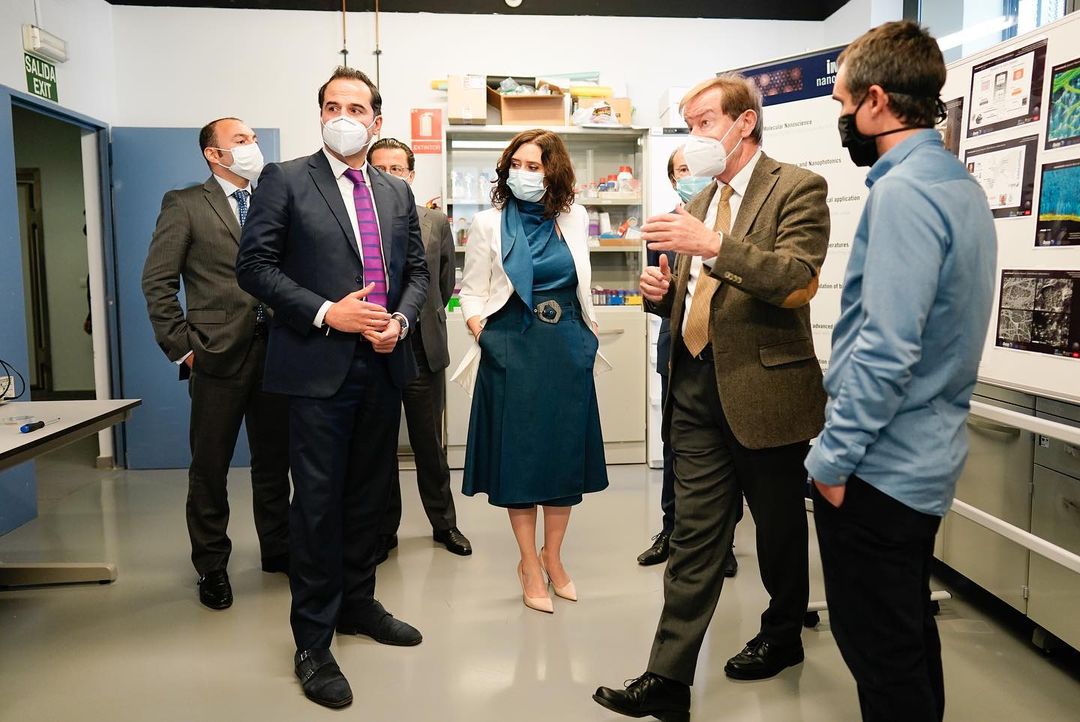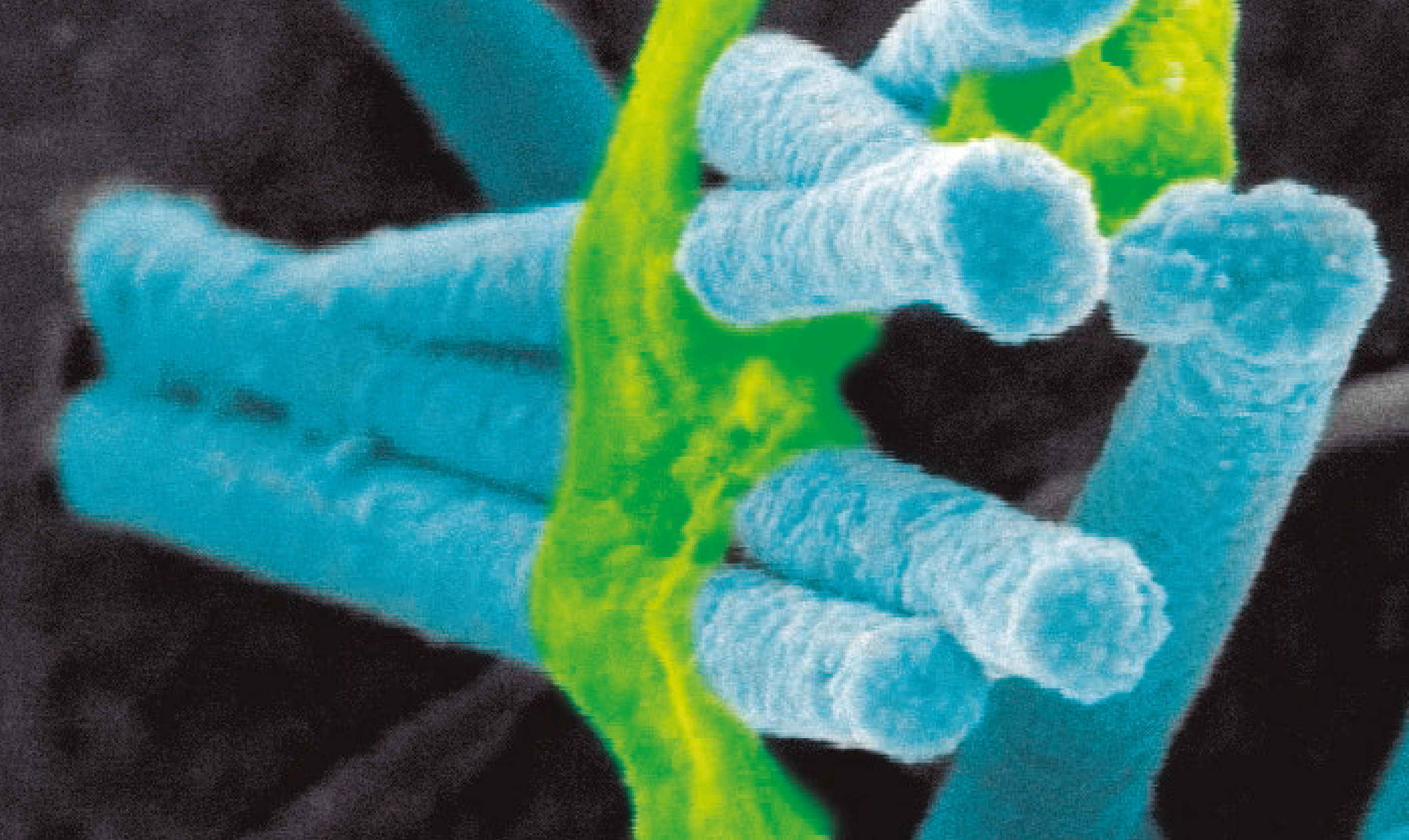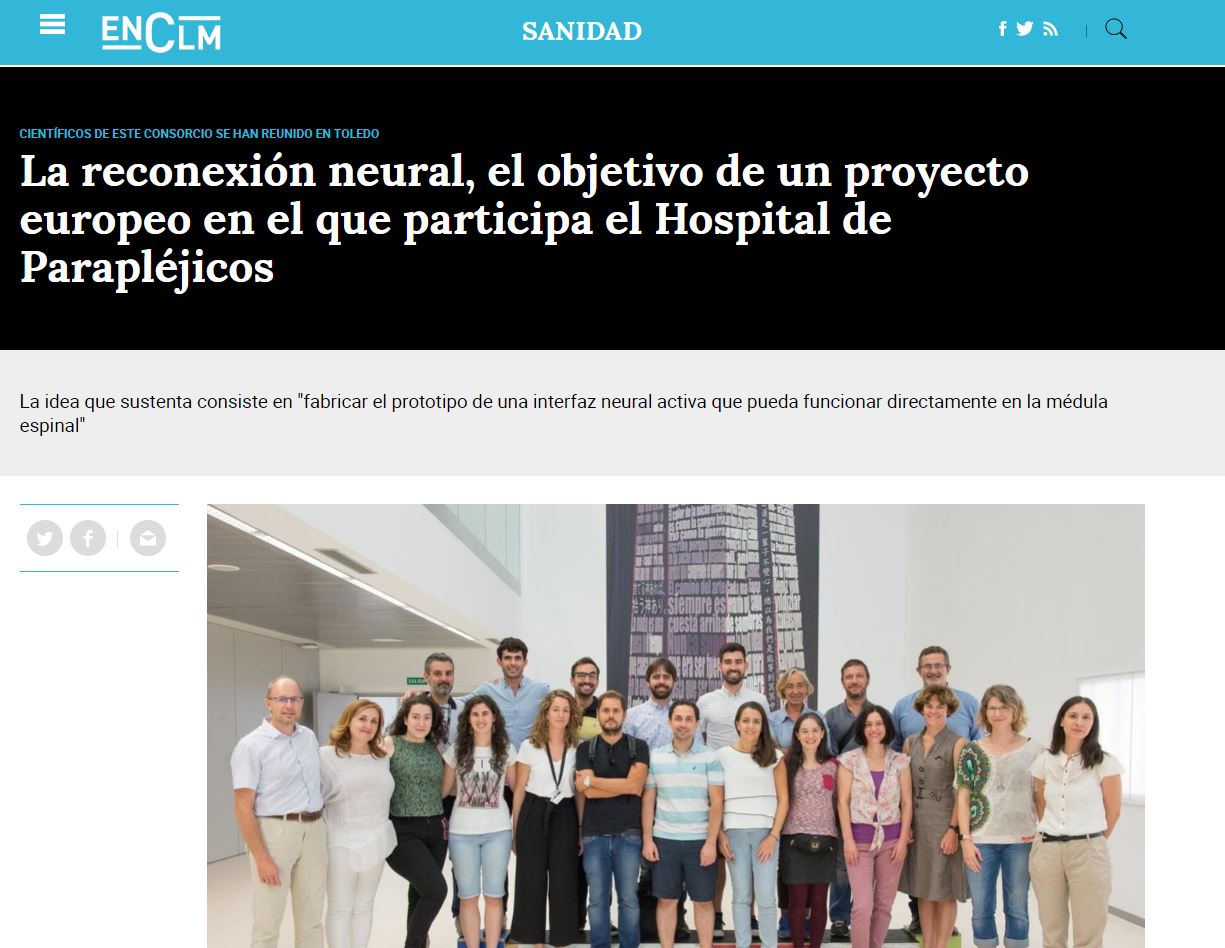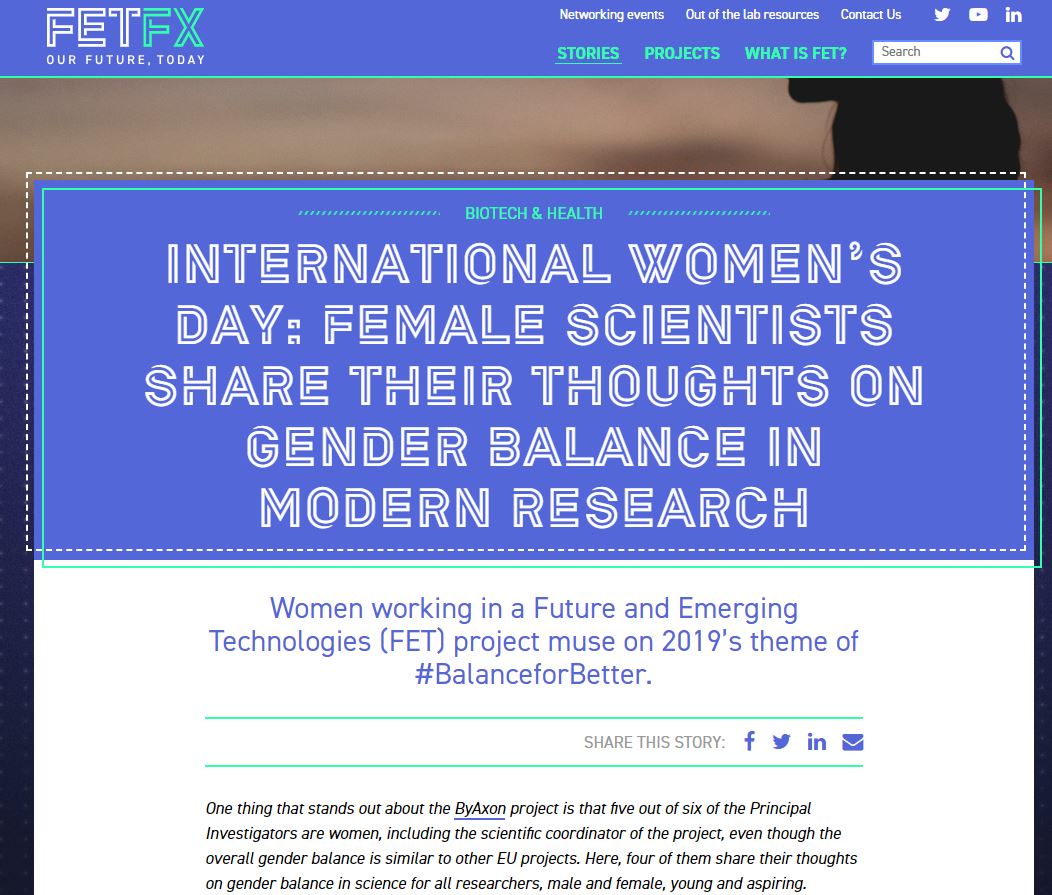BYAXON PROJECT JOURNEY FINISHES, BUT THE ROAD DOES NOT END HERE
22nd March 2021
The research project ByAxon has recently celebrated its last Review Meeting, where the principal investigators of the project met with experts in the field for its final revision. The project, funded by the European Commission, pursues an ambitious goal: the neuronal reconnection by means of an active bypass using nanotechnology. This project is part of the FET Framework -Future and Emerging Technologies- a special programme for basic research projects that pursue a visionary and radically new ideas that, through unexplored collaborations, may open new technological possibilities.
Read the full press release here.
REGIONAL GOVERNMENT VISITS IMDEA NANOCIENCIA - VISITORS INTRODUCED TO THE BYAXON PROJECT
11th November 2020
As part of Science Week, the Madrid Regional Government celebrated their government council meeting at the IMDEA Nanociencia institute. As part of the visit they were shown around the laboratories and had the chance to find out about the various EU funded projects coordinated at the Institute. Prof. Rodolfo Miranda (director of IMDEA Nanociencia and principal investigator of BYAXON) gave the Ministers a tour of the ByAxon laboratories where they were able to see first-hand the work that is going on in the project.
The visit was covered by multiple media, including a TV clipping in the News of the regional television TeleMadrid.
LATEST PUBLICATIONS FROM BYAXON: TOWARDS A BYPASS FOR NEURAL RECONNECTION
02nd October 2020
Researchers from the ByAxon Consortium have seen their works published in two international peer-reviewed journals: Advanced Biosystems and Proceedings of the International Academy of Sciences (PNAS).
Can we dream of speaking with the neurons? Of course yes and it is a step closer thanks to the work of ByAxon researchers. Their publication in Adv. Biosys. journal states the design of flexible thin metal electrodes with nanotopography for an intimate interface with neurons. The electrodes could find application in technologies for neurodegenerative diseases. Neural diseases such as spinal cord injury would be a clear target for the therapeutic application of these electrodes. This work is one of the outcomes of an exciting exchange among material scientists and physicists with biologists and medical doctors from the ByAxon Consortium. Four institutions have participated in this work: IMDEA Nanociencia, ICMM-CSIC, Hospital Nacional de Parapléjicos de Toledo and SISSA.
Researchers at SISSA, in collaboration with other research institutions across Europe, synthesized an artificial scaffold based on nanomaterials with the necessary characteristics to guide axonal rewiring. The work has been published by PNAS and has Open Access rights. The combined efforts using nanotechnology and neurobiology might succeed in the design of hybrid microsystems that, once functionally integrated into the nervous tissue, might help in healing the injured spinal cord. Well done Prof. Ballerini et al.!
These works are the outcomes of research efforts towards neural reconnection using nanotechnology of the ByAxon consortium. All of them have Open Access rights and can be downloaded from the repository Zenodo.
Tweet this
BYAXON AT THE ONLINE MEETING OF THE SPECIAL INTEREST GROUP ON E-HEALTH ON SOUTH-WEST GERMANY
17th July 2020The project ByAxon has participated in a special interest group on the topic of eHealth invited by FET Briefing, the EU-funded project for the exploitation of FET research, and organized by "Baden-Wüttenberg Connected" (bwcon), the business initiative for the promotion of the high-tech sectors in the South-West of Germany.
Teresa Rodríguez, IP of the project, presented the work of ByAxon to an audience of industries from the biotech sector. The matchmaking session will give the project the opportunity to find potential partners and receive feedback.
Tweet this
Podcast "Coffee Break"
The latest publication of ByAxon in Advanced Biosystems journal is presented by enginneer Sara Robisco and discussed by scientists in the podcast "Coffee Break". The episode has an upper bound of 47.000 listenings. [28.08.2020]
Listen to the podcast (in Spanish):
Regional radio and TV (Madrid)
Vice-President of the Community of Madrid Ignacio Aguado visits IMDEA Nanociencia together with Science Counselor Eduardo Sicilia and they get interested in ByAxon project. The regional TV Telemadrid News programme and radio SER covered it. [27.01.2020]
Local TV (Toledo)
Mª Concepción Serrano (ICMM) and Elisa López (Hospital Parapléjicos Toledo) talks with Radiotelevisión Diocesana de Toledo with the occasion of the 3rd General Assembly of ByAxon. [19.09.2019]
Regional radio (Toledo)
Lucas Pérez, physicist and researcher of ByAxon at IMDEA Nanociencia, talks about magnetism and the project ByAxon in the regional radio La Ser Toledo. [28.09.2018]
Listen to the podcast (in Spanish):
Regional radio (Toledo)
María Concepción Serrano López-Terradas (ICMM-CSIC) in Castilla-La Mancha Media.
[16.01.2018]

National TV (Spain)
Teresa Rodríguez, principal investigator of ByAxon, explains the project in Lab24, a scientific dissemination programme of the Spanish national TV (minute 4:05). [04.07.2017]
Tweet thisRegional TV (Castilla la Mancha)
M. Concepción Serrano and Elisa López welcome the cameras of the Spanish regional TV news to the Hospital Nacional de Parapléjicos (SESCAM). Minute 13:10. [16.01.2017]
Tweet this  |
Madrid lidera un proyecto europeo de implantes para recuperar funciones tras una lesión medular. [Spanish] Source: ABC Madrid Date: 27.01.2020 |
|
 |
La reconexión neural, el objetivo de un proyecto europeo en el que participa el Hospital de Parapléjicos [Spanish] Source: En Castilla la Mancha Date: 24.09.2019 |
|
 |
International Women's Day: female scientists share their thoughts on gender balance in modern research Source: FETFX Date: 08.03.2019 |
|
 |
Press release: Two researchers from Hospital Nacional de Parapléjicos presented their project at the Congress of the Spanish Society of Neuroscience. [Spanish] Source: Website of the Regional Government CastillaLaMancha.es Date: 02.10.2017 |
|
 |
Neuron-integrated nanotubes to repair nerve fibers. Source: Science Daily Date: 26.06.2017 |
Research engineer in instrumentation and magnetism (closed)
Application deadline: 2nd September 2019A magneto-optical Kerr effect (MOKE) microscope has already been developed and is used in the lab. Apart from it, magnetoresistance (MR) and low frequency noise are measured in a separate four-probe set-up with a variable temperature stage. The role of the engineer will be to add the possibility of measuring simultaneously MOKE properties (magnetic hysteresis cycles, coercive or anisotropy field), MR and low frequency noise in the MOKE set-up. In addition, two new features have to be developed: regulation of the temperature in the 300 – 330 K range, and rotation of samples during measurements.
The assignment will entail:
- Electronics readout design and tests
- Labview programing
- Characterization of various samples fabricated in the project
More information


